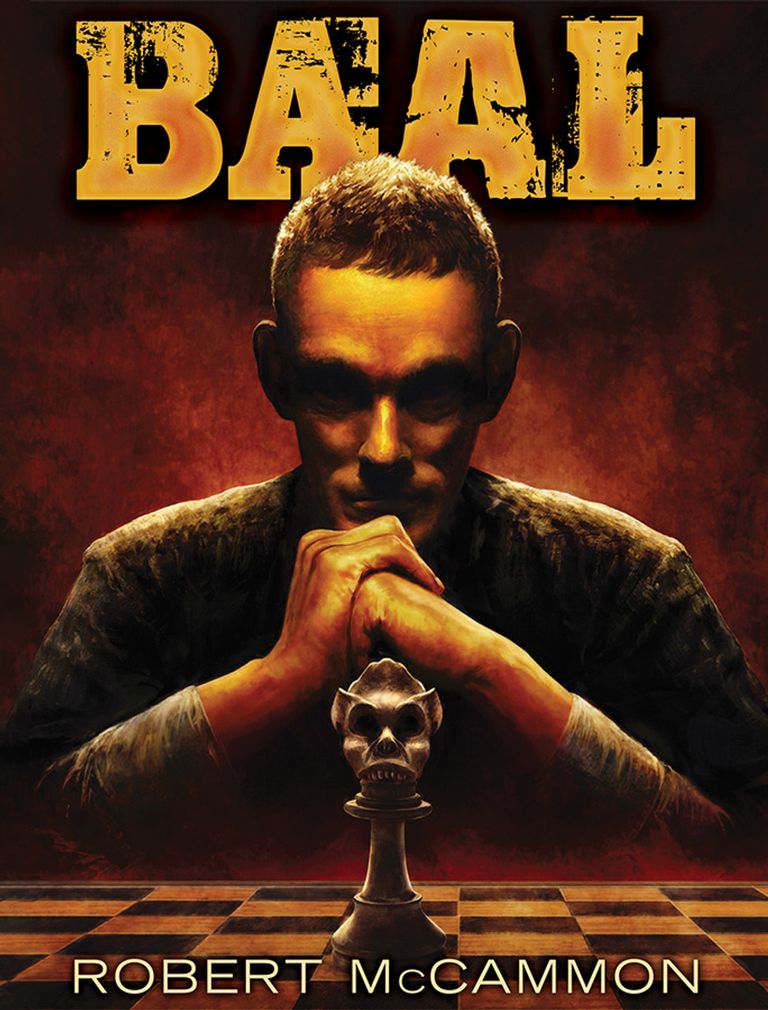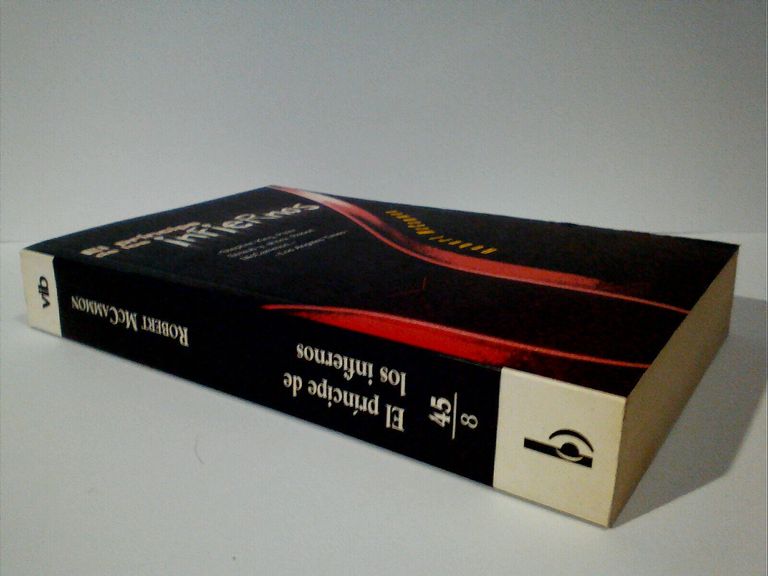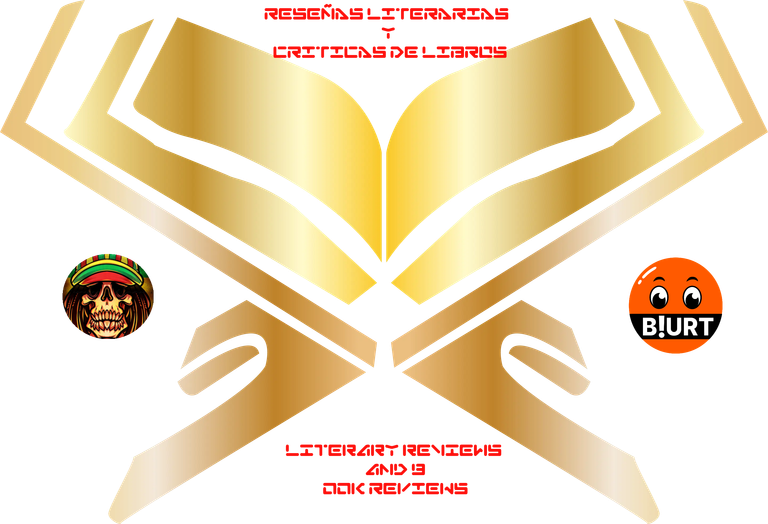
Robert R. McCammon (Birmingham, 17 July 1952) is an American novelist.
He made his debut in 1978 with the novel Baal, beginning a prolific career as a novelist that led him to write a total of thirteen novels before taking a long break from work at the end of 1992. He has recently returned to publishing: in 2002 he re-entered the market with Speaks the Nightbird and in 2007 came his latest The Queen of Bedlam.
In Italy, McCammon has recently been rediscovered by Gargoyle Books, the Roman publishing house specialising in horror fiction, which published Hanno sete (They Thirst) in 2005. Il bacio oscuro (They Thirst, 1981), in 2006 L'ora del lupo. The Claws of the Night (The Wolf's Hour, 1989), in 2007 The Dark Way (Mystery Walk, 1983), in 2009 The Curse of the House of Usher (Usher's Passing 1984), inspired by the short story The Collapse of the House of Usher by Edgar Allan Poe, and in 2010 Mary Terror (Mine, 1990).
I discovered this author at a flea market where I bought the book The Swan Song. I was so fascinated by his reading that I started looking for his remaining works.
In chronological order from the first to the last, I will begin by giving a complete and detailed review of each novel.

Robert R. McCammon (Birmingham, 17 de julio de 1952) es un novelista estadounidense.
Debutó en 1978 con la novela Baal, iniciando una prolífica carrera como novelista que le llevó a escribir un total de trece novelas antes de tomarse un largo descanso a finales de 1992. Recientemente ha vuelto a publicar: en 2002 se reincorporó al mercado con Speaks the Nightbird y en 2007 llegó su última The Queen of Bedlam.
En Italia, McCammon ha sido redescubierto recientemente por Gargoyle Books, la editorial romana especializada en ficción de terror, que publicó Hanno sete (Tienen sed) en 2005. Il bacio oscuro (Ellos tienen sed, 1981), en 2006 L'ora del lupo. Las garras de la noche (The Wolf's Hour, 1989), en 2007 El camino oscuro (Mystery Walk, 1983), en 2009 La maldición de la casa Usher (Usher's Passing 1984), inspirada en el cuento El hundimiento de la casa Usher de Edgar Allan Poe, y en 2010 Mary Terror (Mine, 1990).
Descubrí a esta autora en un mercadillo donde compré el libro El canto del cisne. Me fascinó tanto su lectura que empecé a buscar el resto de sus obras.
En orden cronológico de la primera a la última, comenzaré haciendo una reseña completa y detallada de cada novela.

Baal, the tremendous god of the Phoenicians, sower of Chaos, is again among the living. Hot on Baal's trail are a few individuals who have sensed the imminence of an extraordinary danger, and who may be the only ones able to stop him in time: a shaman named Zark, a professor of theology, and an ambiguous but willing character, Michael. What is it exactly that they want to avoid? Why do they believe, or fear, that Baal's is no longer just a myth but a terrible reality?
Violence was tearing the sky.
Kul-Haziz sniffed it in the air. It reeked of swords clashing together, of sweat, of fresh blood, of ancient guilt.
Alarmed, he took his eyes off the sheep bent over grazing, squinted his eyelids and looked north. Motionless in the whiteness of the sky, the sun burned as it had for a thousand years. With his eye he could see what was happening beyond the ravines and still further on, beyond the lowlands and pastures, behind the hills that rose in the distance. He saw what Kul-Haziz could not see. Kul-Haziz could only smell it.
Without taking his eyes off the horizon veiled in mist, Kul-Haziz picked up his gnarled stick from the ground and moved slowly through the herd, brushing against the flanks of the beasts. He, his wife and young son had always followed the path of the rain, because the rain brought grass. The life of the flock. And now, towards the north, where the city of Hazor stood, great dark shapes that looked like clouds were gathering. But they were not. There was no smell of rain in the air; if there had been, Kul-Haziz would have noticed it a few days ago. No. There was no smell of rain. There was only the smell of violence.
Behind him, under the curtain of goatskins, his wife stopped working the leather and looked up. In front of him, on the other side of the valley, her son had, until a few moments before, beaten his stick into the ground, to summon some stray animal. Now it was no longer beating, and he looked at his father.
Kul-Haziz was as still as a stone. He lifted a hand, then brought it in front of his eyes to shield them from the glare of the sun. He did not understand what was happening. He remembered the words of the other nomad shepherds. The wrath of Yahweh is upon us. We are a doomed race, they said in a trembling voice. Yahweh will destroy us all for our wickedness. Thus murmured the shepherd prophets, the nomads of the plains, the lords of the hills. Kul-Haziz felt his heart beating tumultuously. It sounded like a voice crying out, demanding to know.
His son made his way through the herd and came to stand beside him. He grasped his hand.
There was a flash that was similar to lightning, but it was not lightning. Far to the north, in the direction of the city of Hazor. A blue and intense flash, blinding, bright, terrible. Kul-Haziz covered his eyes with his hand. His son embraced him, and hid his face on his chest. Behind him, his wife let out a cry of terror; the sheep fled in all directions. Kul-Haziz felt a flush on the back of his hand. When the flush ceased, he opened his eyes again and no longer saw the flash. His son stared at him: in his eyes was a question that Kul-Haziz dared not answer.
And then he saw. Beyond the ravines, at the edge of the plain, the trees were bending under a mighty wind, breaking and catching fire. And the grass-covered expanses turned black, as if they had been trampled by an army moving away from Hazor. The army of flames crossed the lowland, burnt it. The brambles caught fire. The sand rolled up.
The wind reached Kul-Haziz in the low grass-covered valley, whirled around him, tried to tear away the rags that covered him, blew his secret into his ear. The sheep bleated in terror.
Within a few moments, the fire that had consumed Hazor and now consumed every living thing in the vicinity of the city would also arrive. Kul-Haziz realised that he and his family had only a few breaths left before the increasingly hot air turned into a white blaze.
His son, beside him, murmured: - Father...?
The prophets had spoken the truth. Their skulls and sticks, their words written in the sky, had foretold the approaching end. It was simply a matter of time.
Kul-Haziz said: - The great god Baal is no more. He stood as still as a stone.
A stone set on fire.

Baal, el tremendo dios de los fenicios, sembrador del Caos, está de nuevo entre los vivos. Tras la pista de Baal se encuentran unos cuantos individuos que han presentido la inminencia de un peligro extraordinario, y que quizá sean los únicos capaces de detenerlo a tiempo: un chamán llamado Zark, un profesor de teología y un personaje ambiguo pero voluntarioso, Michael. ¿Qué es exactamente lo que quieren evitar? ¿Por qué creen, o temen, que lo de Baal ya no es sólo un mito, sino una terrible realidad?
La violencia rasgaba el cielo.
Kul-Haziz la olfateó en el aire. Apestaba a espadas chocando entre sí, a sudor, a sangre fresca, a antigua culpa.
Alarmado, apartó los ojos de las ovejas agachadas pastando, entrecerró los párpados y miró hacia el norte. Inmóvil en la blancura del cielo, el sol ardía como hacía mil años. Con su mirada podía ver lo que ocurría más allá de los barrancos y aún más allá, más allá de las tierras bajas y los pastos, detrás de las colinas que se alzaban en la distancia. Veía lo que Kul-Haziz no podía ver. Kul-Haziz sólo podía olerlo.
Sin apartar los ojos del horizonte velado por la niebla, Kul-Haziz recogió su nudoso bastón del suelo y avanzó lentamente entre el rebaño, rozando los flancos de las bestias. Él, su mujer y su joven hijo siempre habían seguido el camino de la lluvia, porque la lluvia traía hierba. La vida del rebaño. Y ahora, hacia el norte, donde se alzaba la ciudad de Hazor, se acumulaban grandes formas oscuras que parecían nubes. Pero no lo eran. No había olor a lluvia en el aire; si lo hubiera habido, Kul-Haziz lo habría notado hace unos días. No. No había olor a lluvia. Sólo había olor a violencia.
Detrás de él, bajo la cortina de pieles de cabra, su mujer dejó de trabajar el cuero y levantó la vista. Frente a él, al otro lado del valle, su hijo había, hasta hacía unos momentos, golpeado el suelo con su bastón, para invocar a algún animal extraviado. Ahora ya no golpeaba, y miró a su padre.
Kul-Haziz estaba quieto como una piedra. Levantó una mano y se la puso delante de los ojos para protegerlos del resplandor del sol. No comprendía lo que estaba ocurriendo. Recordó las palabras de los otros pastores nómadas. La ira de Yahvé está sobre nosotros. Somos una raza condenada, dijeron con voz temblorosa. Yahvé nos destruirá a todos por nuestra maldad. Así murmuraban los profetas pastores, los nómadas de las llanuras, los señores de las colinas. Kul-Haziz sintió que su corazón latía tumultuosamente. Sonaba como una voz que gritaba, exigiendo saber.
Su hijo se abrió paso a través del rebaño y llegó a su lado. Le agarró la mano.
Hubo un destello parecido a un relámpago, pero no era un relámpago. Muy al norte, en dirección a la ciudad de Hazor. Un destello azul e intenso, cegador, brillante, terrible. Kul-Haziz se cubrió los ojos con la mano. Su hijo lo abrazó y escondió la cara en su pecho. Detrás de él, su mujer lanzó un grito de terror; las ovejas huyeron en todas direcciones. Kul-Haziz sintió un rubor en el dorso de la mano. Cuando el sofoco cesó, volvió a abrir los ojos y ya no vio el destello. Su hijo lo miraba fijamente: en sus ojos había una pregunta que Kul-Haziz no se atrevía a responder.
Y entonces lo vio. Más allá de los barrancos, al borde de la llanura, los árboles se doblaban bajo un viento impetuoso, se rompían y se incendiaban. Y las extensiones cubiertas de hierba se volvieron negras, como si las hubiera pisoteado un ejército que se alejaba de Hazor. El ejército de llamas cruzó la llanura, la quemó. Las zarzas se incendiaron. La arena se arremolinó.
El viento alcanzó a Kul-Haziz en el valle bajo cubierto de hierba, giró a su alrededor, intentó arrancarle los harapos que lo cubrían, le sopló el secreto al oído. Las ovejas balaron aterrorizadas.
En unos instantes llegaría también el fuego que había consumido Hazor y que ahora consumía a todo ser viviente en los alrededores de la ciudad. Kul-Haziz se dio cuenta de que a él y a su familia sólo les quedaban unos pocos respiros antes de que el aire, cada vez más caliente, se convirtiera en una llamarada blanca.
Su hijo, a su lado, murmuró: - ¿Padre...?
Los profetas habían dicho la verdad. Sus calaveras y palos, sus palabras escritas en el cielo, habían predicho la proximidad del fin. Era sólo cuestión de tiempo.
Kul-Haziz dijo: - El gran dios Baal ya no existe. Se quedó quieto como una piedra.
Una piedra incendiada.

In the late 1970s, horror, driven by the international success of The Exorcist (1971), was about to become one of the most commercial genres, inaugurating the era of the horror best-seller, which would last for more than a decade. The main names in the genre began to publish their first works. Stephen King launched his career in 1974 with Carrie, and soon went on to string together a series of successes that would take him to the preeminent position he still occupies today; Dean Koontz spent the entire decade releasing titles under a plethora of pseudonyms (until consolidating his own name in 1980 with Whispers); Peter Straub redirected his incipient career towards horror through Julia (1975); and Robert R. McCammon made his debut in fiction in 1978 with Baal.
McCammon's perspective remains somewhat naive, but his (rather racist) depiction of religious/political hysteria offers relatively fresh insights, which heighten the novel's interest. We are also introduced to a mysterious character, Michael (whose true nature becomes apparent in two paragraphs, although the author tries to conceal it until the end of the novel). There is also an attempt to relate the events to the Arab-Israeli conflict (which at that time was still mired in the political consequences of the Six-Day War), as well as a crude mytho-theological exploration of the figure of the historical Baal, which drags on into the third act.

A finales de los años setenta el terror, impulsada por el éxito internacional de «El exorcista» (1971), estaba a punto de erigirse en uno de los géneros más comerciales, inaugurando la etapa del best seller de terror, que se extendería por más de una década. Los principales nombres del género empezaron a publicar sus primeras obras. Stephen King lanzó su carrera en 1974 con «Carrie», y pronto encadenó una serie de éxitos que lo llevarían a la posición preeminente que aun hoy ocupa; Dean Koontz se pasó toda la década lanzando títulos con una plétora de seudónimos (hasta consolidar su propio nombre en 1980 con «Susurros»); Peter Straub recondujo su incipiente carrera hacia el horror por medio de «Julia» (1975); y Robert R. McCammon se estrenó en la ficción en 1978 con «El príncipe de los infiernos» («Baal»).
La perspectiva de McCammon sigue siendo un tanto inocentona, pero su descripción (bastante racista) de la histeria religiosa/política, ofrece estampas relativamente novedosas, que elevan el interés de la novela. Se nos presenta, además, a un personaje misterioso, Michael (cuya auténtica naturaleza se hace evidente en dos párrafos, aunque el autor intente disimularlo hasta el final de la novela). También hay un intento por relacionar los acontecimientos con el conflicto árabe-israelí (que por aquel entonces aún estaba empantanado en las consecuencias políticas de la Guerra de los Seis Días), así como una burda exploración mito-teológica de la figura del Baal histórico, que arrastra hasta el tercer acto.

Source images / Fuente imágenes: Robert McCammon.


Fuente de la imagen banner final post / Image source banner final post.

Upvoted. Thank You for sending some of your rewards to @null. Get more BLURT:
@ mariuszkarowski/how-to-get-automatic-upvote-from-my-accounts@ blurtbooster/blurt-booster-introduction-rules-and-guidelines-1699999662965@ nalexadre/blurt-nexus-creating-an-affiliate-account-1700008765859@ kryptodenno - win BLURT POWER delegationNote: This bot will not vote on AI-generated content
Thanks!